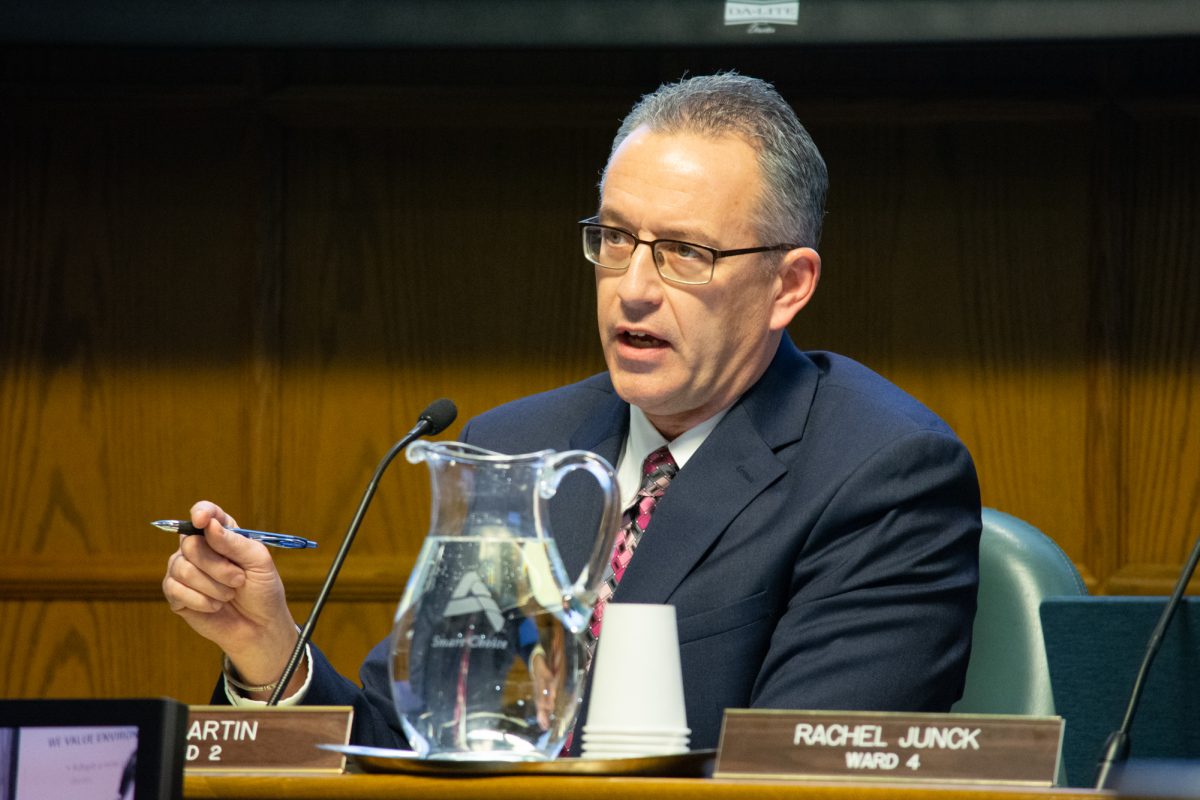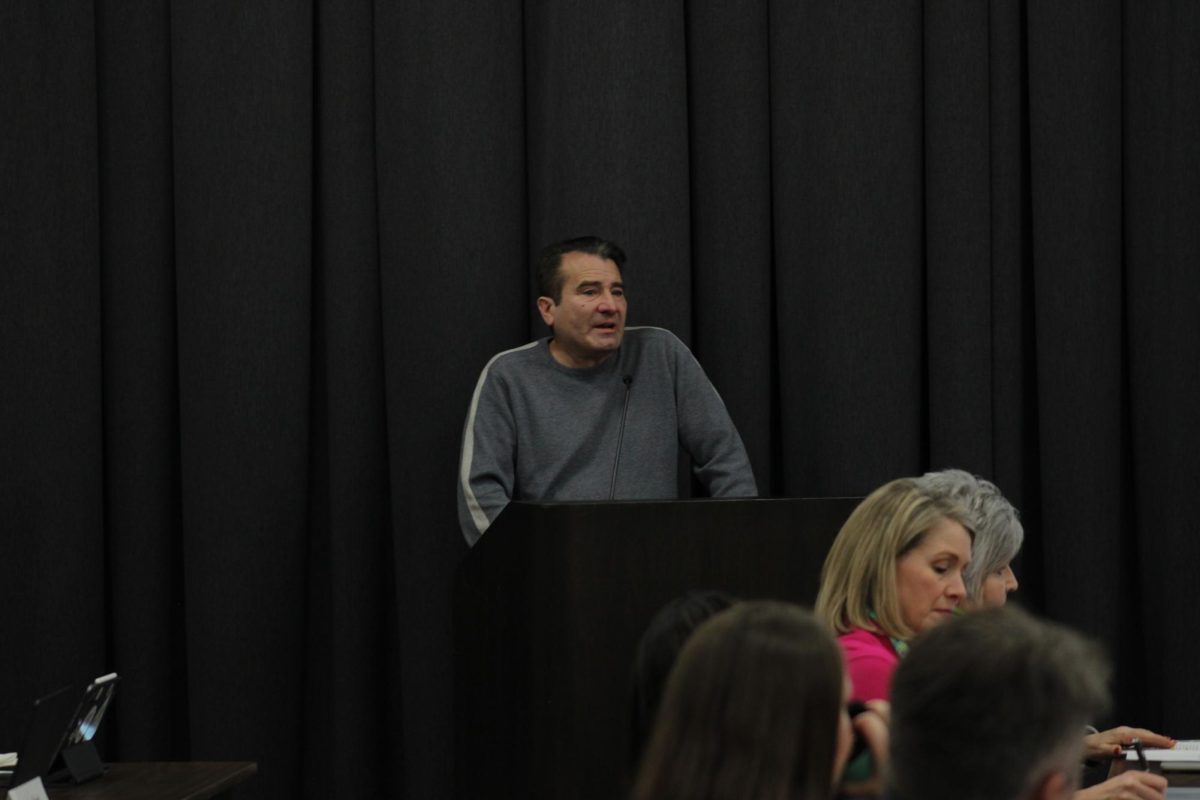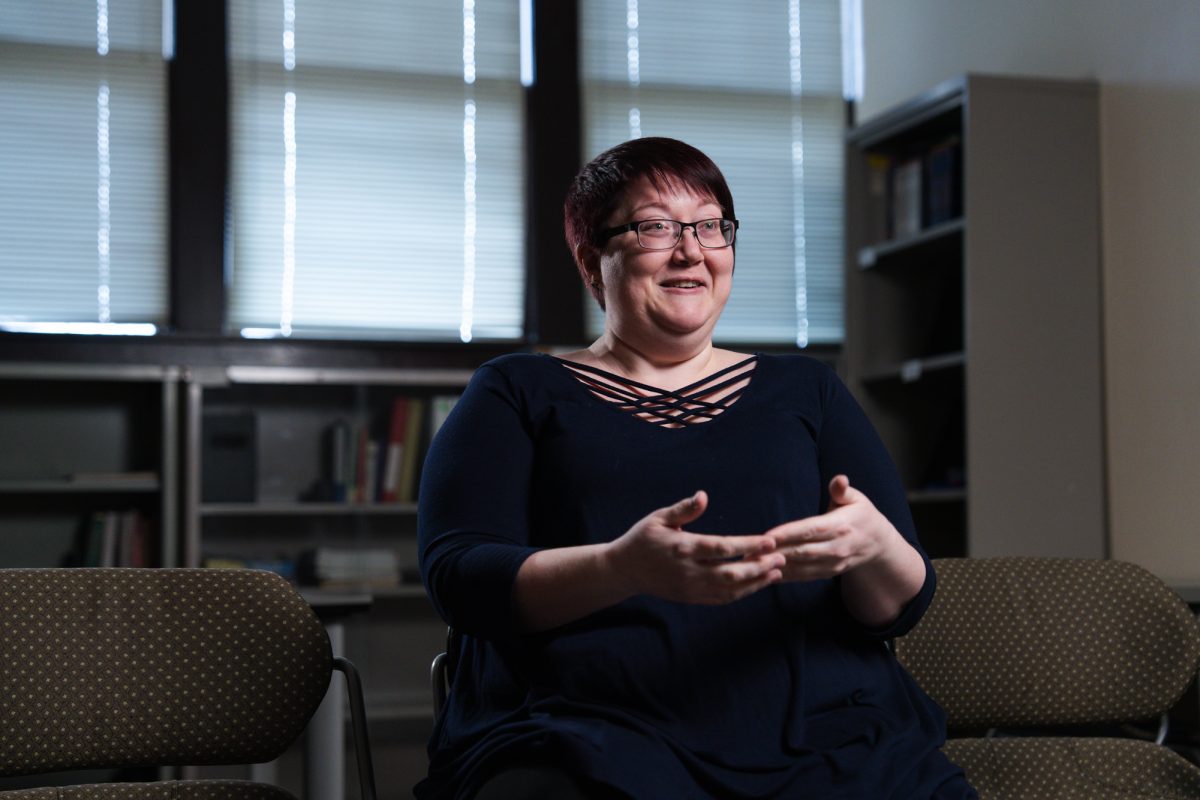Korges: The National Endowment for the Arts is needed
Rose Frantzen, celebrated Iowa artist, will be at Iowa State for her live painting portrait sessions until April 6 at the Christian Petersen Art Museum. One of Frantzen’s favorite features to paint are noses. “I almost love every nose I get to paint. Noses are fascinating to me,” Frantzen said.
April 11, 2017
Since word has come out that the current administration has proposed cutting funding for the the National Endowment for the Arts (NEA), concern has grown for what this might potentially mean. Many Iowa State students may not be aware of exactly what the NEA does, and how it may impact them.
Congress established the NEA in 1965 as an independent federal agency. Its purpose is to give Americans “the opportunity to participate in the arts, exercise their imaginations, and develop their creative capacities.” The NEA supports art and learning through partnerships with other agencies, both on the state and federal level. Through this system, the NEA is able to follow its mission, affirming and celebrating America’s “rich and diverse cultural heritage.”
These efforts aren’t centered around the coasts, either. The NEA does not just build up or work with already established cultural centers. Instead, the NEA works to extend art and culture across the United States, ensuring the heartland does not get neglected. Otherwise, the Midwest might fall out of the loop.
“Charitable giving as a whole in the United States is geographically disproportional, with rural areas receiving only 5.5 percent of all philanthropic dollars,” the NEA website reads. The NEA’s funding allows for the accomplishment of what private individuals would not be able to achieve on their own. Without federal funding, Midwestern cultural institutions and Midwestern artists risk falling between the cracks.
The work the NEA does also directly aids the economy. Art and culture account for 4.2 persent of the gross domestic product (GDP), totaling up to $742 billion. By investing in art and culture sectors, the NEA not only adds to our cultural and artistic wealth as a nation but also to our financial wealth.
The NEA also provides jobs. According to its own count, the NEA has provided “more than 2 million full-time artists and nearly 5 million arts-related jobs.” It encourages donations to the arts as well, as every dollar the NEA invests is matched by various non-governmental investments.
The NEA directly benefits communities with the money it invests. Not only does it ensure that entire communities do not go overlooked by charitable givers, but it also works to ensure individuals do not go overlooked, providing services and opportunities for people such as military service members by creating programs catering to their needs — like military healing arts programs. The NEA ensures that all 435 congressional districts are benefited by the grants they give. As the NEA clearly states, “The NEA’s role is to make sure all Americans have access to the arts no matter where they live.” This is a role it clearly takes seriously.
Despite the good the agency does across the entire country and the benefits it provides rural areas that otherwise would be largely absent, the NEA is still under the threat of being cut. Unfortunately, when it comes to advocating for its own existence, the NEA largely has its hands tied. “NEA staff, including the NEA chairman, cannot lobby or participate in efforts designed to influence Congress regarding appropriations, law, legislation or policy, in their official capacity.” This is a general rule across all federal agencies.
This, on some level, leaves the promotion and advocacy of the National Endowment for the Arts in the hands of private individuals and groups. This means that it is more important than ever to be informed about what the NEA provides Americans.
As students and young artists in the Midwest, we are even more clearly assisted by the opportunities the National Endowment for the Arts provides us. The national endowment ensures there is a way for the young, the aspiring and the potentially overlooked among us to have access to art and culture, and to thusly shape it ourselves.
Regardless of background, birthplace or political alignment, the NEA provides us with an open door with which to better understand and interact with the vast cultural and artistic world around us. And that mission alone is worth preserving.







